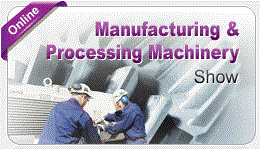The shape of things to come
- gtbmsbcs
- 2019年6月20日
- 讀畢需時 3 分鐘
CNC vertical milling and turning centre specialist, the Chiron Group, explains why more and more companies are choosing optimum machining solutions for aerospace components.

Producing complex aerospace parts requires a fast, precise, and dynamic machining centre. For manufacturing critical components, this means using a 5-axis machining centre which are essential for producing reliable aircraft engine components.
The Chiron Group has recently brought a 5-axis machining centre to market precisely matched to the special requirements of the aviation sector: the FZ 16 S with 5-axis tilt rotary table.
Optimum solutions for machining complex aerospace workpieces from exotic materials must provide superior rigidity for stable machining, high spindle speeds to make best use of cutting tools designed for shaping challenging metals, and rapid axis positioning to minimise cycle times. The result is production of precision parts with high quality surface finishes in minimum time.
The mineral cast machine bed of the Chiron FZ 16, with rigid gantry design delivers a high degree of stiffness, and optimum damping characteristics. High-performance motors, two Y-axis drives, as well as short spindle start-up and braking times are the foundation for the machine’s speed. A-axes and C-axes equipped with direct drives deliver even greater dynamics. These machine characteristics assure precise multi-axis motion and smooth acceleration.
The manufacturing operations for complex precision parts in the aerospace sector require a particularly fast, very precise, and extremely dynamic machining centre
A development for the Chiron machines, providing greater stability for the heavier cuts and the rapid axis positioning is the gantry-style construction rather than a C-frame. This construction will be seen in future Chiron Group machines. The base is a vibration-dampening, highly stable concrete material that is less sensitive to heat than cast iron or steel weldments. Even during heavy cuts, the machine runs almost without vibration or noise.
Combining high precision metal removal with high feed rates yields a machine that can hog material while delivering high quality surfaces. This capability is of great interest to producers of aerospace blisks and turbine blades, and complex parts from high alloy and exotic metals. The ability to produce finished parts rapidly in a single setup saves cycle time and avoids the need for secondary operations.
“The exotic materials used for aerospace applications present challenging demands for high accuracy machining,” says Chiron’s aerospace sales engineer, Markus Löhe. “The complex part geometries and the need for smooth surfaces require 5-axis simultaneous machining capability.”
For example, a blisk consists of up to 120 individual blade components on a disk and has a diameter of around 800mm. Workpieces of this kind can only be consistently produced on a fast, high accuracy machining centre, such as Chiron’s FZ 16 S 5-axis.
“Blisks are currently machined on Chiron machines from Inconel at one of our major customers in the sector,” adds Löhe, “where the new FZ 16 S 5-axis machining centre delivered excellent results from the first workpiece.”
Turnkey customer solutions
Turnkey machines are particularly important for the aerospace sector as they reduce handling and therefore promote not only lower cycle times but higher machining accuracy. These complete solutions with end-to-end automation are matched to individual customer requirements at Chiron.
In addition to workholding and selecting the most effective cutting tools, the software provided in the turnkey system also makes a contribution to greater productivity and dynamics in aerospace machining applications.
The software systems in the Chiron SmartLine portfolio make full use of the performance offered by the machining centres. For example, maintenance work and repairs can be planned in a targeted way with the ConditionLine IT system, which allows productivity to be significantly improved. This software detects signs of wear, as well as atypical behaviour early on during operations, which helps prevent costly downtimes before they occur. In terms of CNC control systems, customers can choose between the established solutions in the market from Siemens, Fanuc, or Heidenhain.
Source: Aerospace Manufacturing Magazine










留言